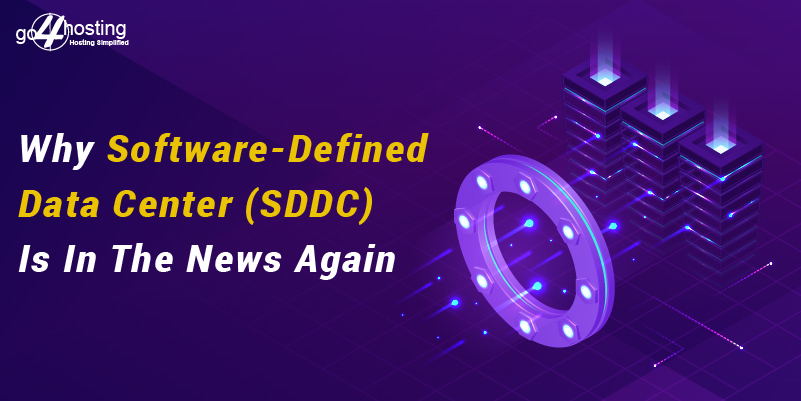Why Software-Defined Data Center (SDDC) Is In The News Again

Numerous software-powered technologies have emerged at the compute layer. Prominent among them are containers, virtual machines, and hypervisors. We have also seen many software-defined approaches in the area of networking. However, when it comes to data storage or software-powered storage capability, we have not seen much progress. SDDC or Software Defined Data Center is changing all that.

Why SDDC is the Future of Storage
It is indeed a surprise that SDDC took so long to make its presence felt even as technology was evolving fast in every other field. Many experts believe that data is the defining word – the problem area. The modern world is completely engulfed by data and businesses thrive only when they are able to extract something valuable from the tons of data that they are swamped with.
What Are The Changes Needed
Networking has the ability to move data to its rightful destination, and that too in a reliable manner and pretty fast too. But with storage, there is a peculiar problem to deal with. It has to be handled right persistently. Storage plays a key role in ensuring that data is managed right. When this does not happen, it can result in many problems. To ensure the best management of the storage system, changes must be carried out at three levels – Organization, Technical and Financial.
Organizational:
Servers, storage, and networking are the types of infrastructure that are generally used in IT management. This can prove to be expensive. Also, it does not allow any elasticity and is low on efficiency as well.
Technical:
In a typical data center, manual processes rule the roost. It may take a lot of time for accessing IT resources. With SDDCs, things get easier as it automates most manual tasks. They also infuse a high degree of efficiency in the processes.
Financial:
An IT customer using a system gets a feeling of ownership as they pay for the equipment and its depreciation as well. With SDDC, they get the desired service without any knowledge of the details of consumption by the equipment. They simply pay on the basis of the resources consumed.
Testing Your Data Center
Data center users are generally in the dark about application needs, deployment styles, and performance parameters. They are probably ignorant of the quantum of data they have and where it currently resides and what plans they have for future management, use and storage of data. It is important to have a clear approach to current and future storage needs. Organizations must know how to deal with the challenges of operating at scale across a complete data center environment using a systematic approach.
The Uncertainties
It is seen that companies that are unable to find a practical way of handling data storage use a base strategy which does not allow the flexibility of expanding data management to applications and environments. As there is a constant churn in the operation level of enterprises and they are always evolving, it becomes imperative to try out new applications and strike a balance between the old and the new. Future needs are not constant as business opportunities cannot be finite and the threat from the competition cannot be accurately measured.
Hyper-Converged infrastructure
Latest offerings in this niche such as the Hyper-Converged infrastructure (HCI) promises a fully integrated solution that can be easily deployed and comes with the kind of compute storage that your business needs now and for the near future as well. You can also meet all your networking and software needs for your applications with this advanced system. You know that it is easy to get the facilities and features you need for effective and efficient storage management.
To get the best out of HCI, you need to have a clear understanding of application selection, scale, capabilities, and scope. Without knowing what you want from the system, you will not be able to leverage the benefits and advantages that it offers.
The key question to ask here is – Will Software-Defined Data Center become a reality quickly? Can your enterprise use it now or is it yet another one of those tall IT dreams being sold by tech experts?
It is clear from the statements being made by leading CIOs and IT architects that SDDCs is taking concrete shape faster than expected. The technology needed for rolling out SDDCs is available. It is now up to organizations to show whether they are ready to adapt to the new storage technology and prepare for tomorrow’s needs in a better way.
The SDDC system you build must take into consideration all your current and future applications and requirements. Select your vendors with care to provide greater agility to your SDDC system. It must serve you later as efficiently as it is serving you now.





